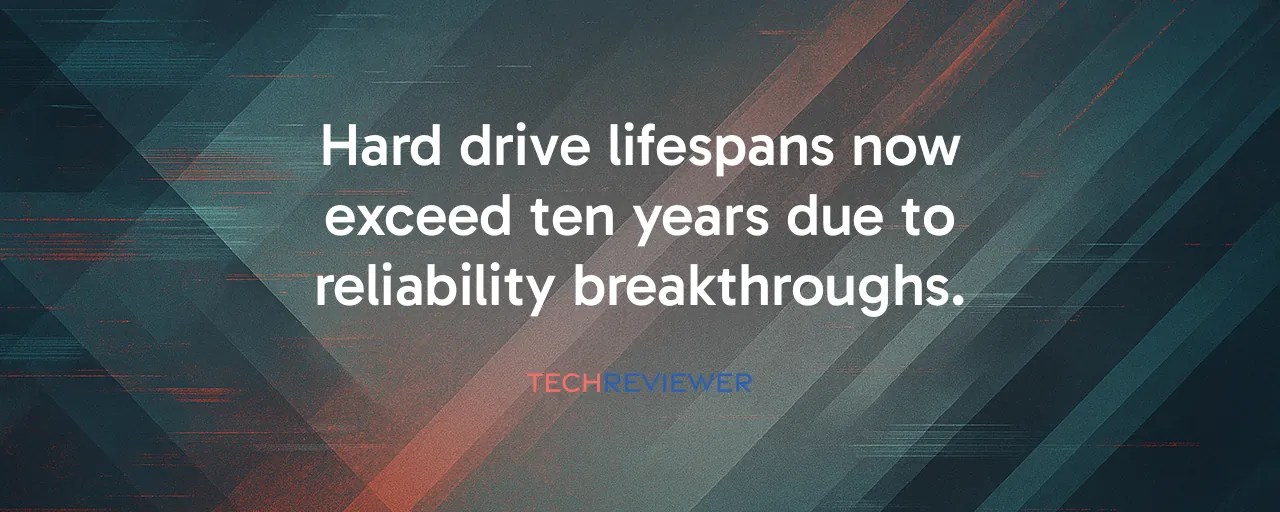A New Era for Hard Drive Longevity
Hard disk drives, the workhorses of data centers, are lasting longer than ever. Backblaze, a cloud storage provider, has tracked 317,230 drives since 2013 and found that modern drives hit peak failure rates of just 4.25% after 10 years and 3 months. Compare that to 2013, when drives failed at a 13.73% rate after three years, or 2021, when the peak was 14.24% at 7 years and 9 months. This leap in reliability, driven by advances from companies like Seagate and Western Digital, is reshaping how data centers plan storage. It's a shift that saves money and tackles the growing problem of electronic waste.
What's behind this change? Innovations like helium-filled enclosures and Heat-Assisted Magnetic Recording from Seagate, which uses lasers to boost storage density, have made drives tougher. Western Digital's OptiNAND technology, blending flash memory with spinning disks, also improves error correction and longevity. These advancements mean drives stay reliable through years of heavy use, a big win for anyone managing massive data workloads.
Real-World Wins: Backblaze and Beyond
Backblaze's own operations show how these improvements play out. Their older 8TB and 12TB drives, now five to eight years old, maintain failure rates between 1.33% and 1.54% annually, far better than expected for their age. By keeping these drives in service, Backblaze expands storage capacity without rushing to replace hardware, saving significant costs. For instance, their HGST 4TB drives, averaging 82.7 months old, boast a failure rate of just 0.40% across 16,349 units. This reliability lets them delay upgrades, freeing up budget for other priorities.
Hyperscale cloud providers like Amazon Web Services or Google Cloud see similar benefits. These giants use millions of drives and rely on sophisticated monitoring to spot early signs of failure. By extending drive lifespans from three to over ten years, they cut replacement costs and reduce the environmental toll of manufacturing new drives. Unlike Backblaze, which shares its data openly, these providers use proprietary systems to optimize drive retirement, balancing reliability with the need for newer, higher-capacity models like Seagate's 32TB drives.
Why It Matters for Costs and the Planet
Longer-lasting drives change the math for data centers. Historically, operators replaced drives every three to five years, expecting high failure rates. Now, with peak failures pushed past a decade, companies can stretch budgets further. Fewer replacements mean lower spending on new hardware, less rack space, and reduced power and cooling costs. For a hyperscale provider managing petabytes of data, these savings add up fast, potentially shaving millions off annual budgets.
The environmental impact is just as significant. Fewer drive replacements mean less electronic waste, a pressing issue as data centers grow. Manufacturing drives demands rare earth metals, plastics, and energy-intensive processes. By running drives longer, companies like Backblaze cut the need for new production, easing strain on resources and reducing carbon emissions from supply chains. This aligns with sustainability goals, especially as regulations in Europe push for less e-waste.
The Catch: Not All Use Cases Are Equal
Not everyone agrees these findings apply universally. Critics point out that Backblaze's data comes from controlled data center environments with stable temperatures and minimal vibration. Consumer setups, with frequent power cycles and varied workloads, might not see the same longevity. For example, a home NAS drive faces different stresses than a server rack in Amsterdam. This gap raises questions about whether small businesses or individuals can bank on similar reliability without advanced monitoring tools.
There's also the issue of survivor bias. Backblaze retires drives showing early wear, which may make their older drive fleets look more reliable than they would in less proactive setups. Plus, new technologies like Heat-Assisted Magnetic Recording lack long-term data to confirm durability over a decade. If laser components degrade faster than expected, failure rates could creep up. These concerns highlight the need for tailored strategies when applying enterprise-grade reliability to other contexts.
What's Next for Storage Reliability
The future looks bright for hard drive reliability. Experts predict failure rates could shift even later, possibly to 12-15 years by 2030, as technologies like Seagate's HAMR and Western Digital's OptiNAND mature. Drives hitting 50TB by 2028 will pack more data into fewer units, further cutting costs and waste. But challenges remain. Data centers must balance keeping reliable older drives versus adopting newer, more efficient models. For instance, a 30TB drive uses less power per terabyte than a 12TB one, tempting operators to upgrade early.
Collaboration could unlock more gains. Manufacturers like Toshiba and Seagate could work with cloud providers to standardize reliability metrics, helping everyone from small businesses to research institutions make smarter storage choices. Open datasets, like Backblaze's, also fuel academic research, refining predictive models for drive failures. As storage needs skyrocket, these efforts will shape a future where data centers run leaner, greener, and more reliably than ever.
